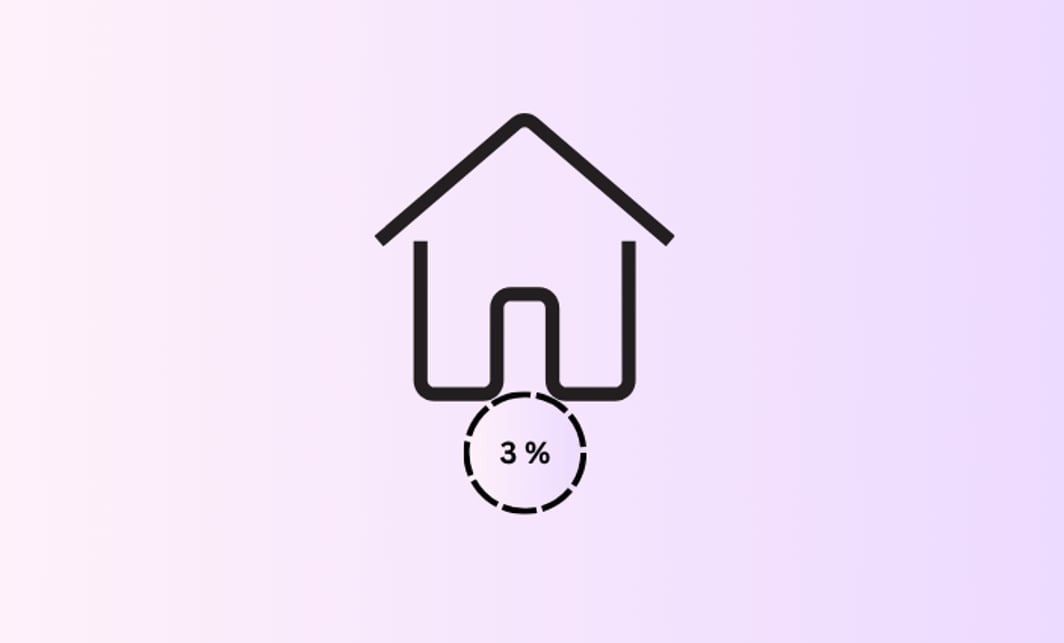What is a mortgage offset account?
An offset account is a bank account linked to your home loan that helps reduce the interest you pay. The money you keep in it offsets your loan balance, so you’re charged interest only on the difference.
How does an offset account work?
An offset account works like your everyday bank account. You can have your salary paid into it, use a debit card, and pay bills from it. The difference is that it’s linked directly to your home loan.
The balance you keep in your offset account reduces the amount of your loan that’s charged interest. So, if your home loan balance is $500,000 and you have $50,000 sitting in your offset account, you’ll only be charged interest on $450,000.
Your repayments don’t change, but since you pay less interest, more of each payment goes toward reducing your loan. This can help you pay off your mortgage faster without having to pay more each month.
But is an offset account really the silver bullet to paying off your loan faster? The answer depends on how you use the account, including your average offset account balance.
How much can you potentially save with an offset account?
Many people have their salary paid straight into the offset account and use it for daily spending. Every dollar that sits there, even temporarily, helps reduce the interest charged on the home loan.
Here’s a hypothetical example to show how different offset balances reduce your interest costs and save money over 1 year, 5 years and 10 years. The initial loan balance assumed for this example is $700,000.
Source: Bheja.ai. Hypothetical example using a loan balance of $700,000 and an assumed interest rate of 5.75% pa.
But would you rather keep your money in a savings account?
Many homeowners ask if it’s better to keep their money in a savings account or an offset account. The benefit of an offset account is that your money is always available, but it also lowers the part of your home loan that gets charged interest. The interest you save this way is tax-free, since you’re not earning it, just avoiding it. On the other hand, any interest you earn in a savings account is added to your taxable income and taxed at your usual rate, which can reduce the real benefit.
Another key point: because mortgage interest rates are generally higher than savings account rates, the savings generated through an offset can be much greater than what you’d earn in a savings account. Even a modest offset balance can cut hundreds or thousands of dollars off your mortgage interest each year. That said, if your offset balance is small or the account comes with fees, those costs may outweigh the benefit. The actual impact depends on your loan size, interest rate, offset balance, and financial habits.
The pros and cons of a mortgage offset account
Potential benefits of a mortgage offset account:
- Every dollar in your offset account helps reduce your mortgage interest. However, not all lenders may offer 100% offset accounts. Make sure you check what you sign up for to get the most benefit.
- You save interest tax-free, unlike taxable income from a savings account.
- Your funds aren’t locked away. You can access the money in the account while still saving money in interest charges.
Potential drawbacks of a mortgage offset account
- Lenders may charge an additional fee or slightly higher rates than basic loans for an offset account.
- You typically need a healthy balance in your offset account to make meaningful savings on your home loan.
- If you live week to week and can’t maintain a buffer, you may just end up paying higher fees for little gain.
Is your offset account really working: What to watch out for
A mortgage offset account might be a handy tool for paying down debt faster but it can’t be a set and forget arrangement.
The Australian Securities and Investments Commission (ASIC) recently announced it would step up surveillance of offset accounts to make sure customers are actually getting the benefits they’ve been promised. The regulator’s latest corporate plan highlights offset accounts as a key focus area, alongside monitoring how mortgage brokers are meeting their “best interests” obligations under credit laws.
So, what sparked ASIC’s interest?
Offset accounts have surged in popularity as homeowners look for ways to ease the sting of higher repayments. As of March 2024, Australians held a record $271.7 billion in these accounts, according to APRA. But while homeowners have been relying on offset accounts to chip away at their mortgages, a string of missteps by major banks has come to light. In recent years, several banks have been caught out for not linking offset accounts properly or failing to deliver the savings customers expected.
- ANZ was fined $25 million in 2022 after failing to provide agreed offset benefits to some borrowers.
- Bankwest had to refund more than $4.9 million to about 10,800 customers back in 2017.
- NAB also repaid $1.7 million to nearly 1,000 home loan customers for similar errors.
These cases have raised red flags for ASIC, which is now concerned that some lenders may be misleading customers , either in how offset accounts are described, how savings are calculated, or how they’re applied in practice.
The regulator’s main concerns include:
- Offset accounts not being properly linked to the home loan
- Delays in applying offset balances to interest calculations
- A lack of clear communication around how much interest customers are really saving
- Fees or restrictions that reduce the benefit without borrowers realising
Here's what you can do right now to ensure your offset account gives you the promised savings
Whether you already have an offset account or you’re thinking of opening one, it pays to double-check a few basics:
Check whether your offset account linked to your mortgage
Make sure your offset account is correctly connected to your loan and that your bank applies the balance daily, not monthly.
Confirm whether you are really saving money
Compare your interest costs against your offset balance regularly to ensure the savings add up.
Know your fees
Package or monthly fees can quickly eat into your savings. Check that you’re saving more in interest than you’re paying in costs.
Type of offset account
Make sure to check how much of your balance is actually applied to your loan. Some accounts only use a portion of your balance to offset your loan. Additionally, some lenders let you have multiple offset accounts, which can help with budgeting. Others may limit you to one.




